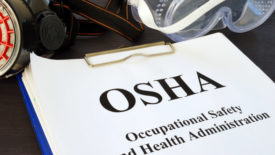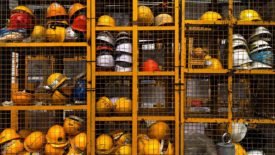Articles by Mike McCullion
Several factors contribute to the prevalence of falls in construction
Read More
How to Engage Employees in Safety through Technology
The use of technology to track safety and health statistics can help with identifying trends, measuring efforts, and working on needed continuous improvement
Read More
How to Take Advantage of Small Business Resources Through OSHA
OSHA's resources can guide small businesses in creating a culture of safety
Read More
How Mental Health Impacts the Sheet Metal and HVAC Industry
One way that SMACNA is addressing mental health and suicide prevention is by partnering with organizations such as CIASP
Read More
Safety and Health Opportunities and Challenges Facing Contractors in 2024
2024 promises more worker safety oversight and regulation
Read More
Building a Safer 2024: Preparing for OSHA Compliance
Achieving and maintaining OSHA compliance requires a proactive approach
Read More
Building a Safer Tomorrow: The Hierarchy of Controls in Construction Safety
Construction safety professionals often employ a systematic approach to develop a broad workplace safety framework
Read More
Saving Lives on Construction Sites: The Crucial Benefits of CPR, AEDs
By strategically placing AEDs throughout the jobsite, construction workers can quickly respond to cardiac incidents
Read More
Heat Stress: Don’t Underestimate the Impact on Workers
Sheet metal and HVAC companies are encouraged to use these resources or develop their own
Read More
Avoid 'Silo Management' to Properly Address Company Safety
Segmenting your organization is necessary, but rigid silos can get in the way of developing a safe workplace culture
Read More
Copyright ©2024. All Rights Reserved BNP Media.
Design, CMS, Hosting & Web Development :: ePublishing









